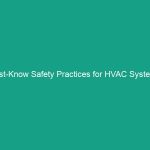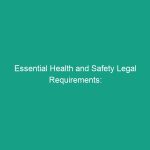Introduction
Good morning team,
Today, we’re going to discuss a crucial aspect of our Safety practices: Essential After-Action Reviews (AARs). Understanding and implementing AARs can significantly enhance our Workplace Safety culture and operational effectiveness. This Toolbox Talk will explain the importance of AARs in mastering our successes and addressing near misses. By the end of this session, you’ll see how AARs can lead to a safer and more efficient work Environment.
Understanding Essential After-Action Reviews (AARs)
An After-Action Review (AAR) is a structured review process conducted after a project, incident, or task to analyze what happened, why it happened, and how it can be improved in the future. The primary goal of an AAR is to identify successes and opportunities for improvement, thereby enhancing our overall Safety and performance.
AARs are essential in the Health, Safety, and Environment (HSE) domain because they provide valuable insights into our operations. They help us learn from our experiences, whether they are successes or near misses. Unfortunately, a common misconception is that AARs are only necessary after accidents. In reality, they should be performed after every significant task or project, regardless of the outcome.
Key Hazards, Risks, and Safety Considerations
When we fail to conduct AARs, we risk repeating mistakes and overlooking potential Hazards. Here are some key hazards and risks associated with neglecting AARs:
- Increased likelihood of incidents: Without learning from past experiences, we are more prone to making the same mistakes.
- Poor communication: A lack of feedback can lead to misunderstandings and confusion about safety protocols.
- Reduced morale: Employees may feel that their experiences and insights are undervalued, leading to disengagement.
- Compliance issues: Ignoring AARs can result in non-compliance with safety Regulations, putting employees and the organization at risk.
Best Practices, Procedures, & Actionable Advice
To effectively implement AARs, follow these Best Practices:
1. Schedule Regular Reviews
Conduct AARs consistently after every significant project or incident. Schedule these reviews at a time when all involved parties can participate actively.
2. Create a Structured Format
Use a standardized format for AARs to ensure consistency and thoroughness. A typical AAR format includes:
- Event Description: What was the task or project?
- What Went Well: Identify successes and positive outcomes.
- What Could Be Improved: Discuss near misses or failures and how they can be addressed.
- Action Items: Assign specific responsibilities for implementing improvements.
3. Encourage Open Dialogue
Create an environment where team members feel safe to share their thoughts and experiences. Encourage everyone to participate in discussions, emphasizing that the goal is to learn and improve, not to assign blame.
4. Document Findings and Actions
Ensure that all insights and action items from the AAR are documented. This documentation serves as a reference for future projects and helps track the implementation of improvements.
5. Follow Up
After action items are assigned, schedule follow-up meetings to check on progress. This reinforces accountability and ensures that the lessons learned from the AAR are applied effectively.
Case Study
Consider a recent incident where a team encountered a near miss involving a heavy machine. The AAR revealed that communication breakdowns and inadequate Training were contributing factors. By addressing these issues through enhanced training and improved communication protocols, the team significantly reduced the risk of future incidents.
Regulations, Standards, and Compliance
Understanding the regulatory framework surrounding AARs is crucial. Compliance with OSHA and ISO Standards is not only about meeting legal requirements but also about ensuring that we provide a safe working environment. AARs can play a key role in demonstrating compliance and commitment to safety.
Employers are required to maintain a safe workplace, and AARs can help identify areas of non-compliance or risk. By regularly conducting AARs, we can proactively address potential hazards and ensure that we meet all necessary regulations.
Employee Engagement & Discussion
Now, let’s open the floor for discussion. Here are a few questions to consider:
- What safety challenges have you encountered related to project execution?
- Can you share an example of an AAR that resulted in positive changes?
- How can we improve our AAR process to encourage more participation?
Your experiences and insights are invaluable as we strive to create a culture of safety. Let’s learn from each other and work together to improve our practices.
Conclusion & Key Takeaways
In conclusion, After-Action Reviews (AARs) are an essential tool for mastering our successes and addressing near misses. By implementing AARs, we can enhance our safety culture, improve communication, and ensure compliance with regulations. Remember, the key points to take away are:
- Conduct AARs consistently after significant tasks or incidents.
- Encourage open dialogue and create a blame-free environment.
- Document findings and assign actionable items to ensure continuous improvement.
Thank you for your attention and your commitment to safety. Let’s prioritize these practices and make our workplace a safer place for everyone.


